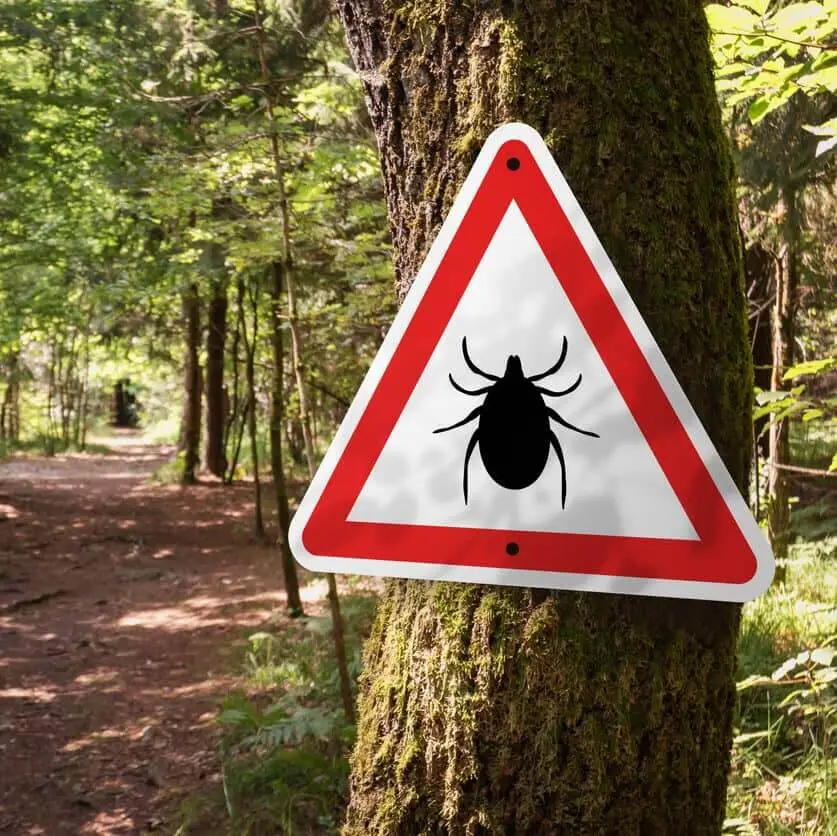Lyme Disease Treatment in Brookfield, WI
Lyme Disease Diagnosis and Treatment Program in Brookfield, WI
Infection with Lyme bacteria can lead to long-term illness. It’s usually called chronic Lyme disease. But not everyone believes it’s real.
If you think your symptoms might be the result of a Lyme infection — past or present — Forum Health Brookfield believes you. Our functional and integrative doctors will listen to you and start treatment based on clinical judgment — even if tests are negative. Then we’ll keep exploring.
At Forum Health Brookfield, we can treat chronic Lyme disease. Through a combination of antibiotics, IV therapies, and lifestyle changes, we’ll work to address the root causes and get you well.
What is Lyme disease?
Lyme disease is the most common tick-borne infectious disease in the U.S., with the CDC estimating 300,000 diagnoses every year.1 It is transmitted by blacklegged deer ticks infected with Lyme bacteria. Strains active in the U.S. are typically from the bacterial species Borrelia burgdorferi.
After a bite from an infected tick, B. burgdorferi microbes can latch onto blood vessels and travel through your bloodstream. This allows their spread to key destinations like your heart, joints, and nervous system. Once hidden throughout your body, Lyme bacteria can suppress your immune system — and survive acute treatment.
Why is Lyme Disease Controversial?
Lyme disease can be difficult to diagnose. Because the signs and symptoms vary widely, it’s called “the great imitator,” said to mimic several chronic conditions. These more conventional diagnoses are among the most common resulting from Lyme bacteria infection:
- Fibromyalgia
- Chronic fatigue syndrome
- Rheumatoid arthritis
- Multiple sclerosis
- Anxiety
- Depression
- Parkinson’s and Alzheimer’s
The difficulty of diagnosing chronic Lyme disease is compounded by one fundamental problem: Many doctors believe it doesn’t even exist. It’s important to understand that much of the controversy is driven by semantics.
Fibromyalgia and chronic fatigue syndrome are examples of idiopathic diseases. That means they don’t have an apparent or known cause. To many people who are sick, “chronic Lyme disease” feels more accurate than an idiopathic label. It communicates that their symptoms are caused by an immune system response to infection. The mainstream medical community will use a more neutral term, post-treatment Lyme disease syndrome (PTLDS), to imply that symptoms might have several causes.
In a strict sense, Lyme disease is caused by Borrelia burgdorferi — the specific bacterial species discovered in the town of Lyme, Connecticut. But there are actually more than 300 strains of Borrelia that can cause similar chronic symptoms. While only burgdorferi is widely recognized as causing Lyme, the general public tends to lump all Borrelia infections together. This causes confusion.

Lyme disease in the U.S. is most common in the Northeast, mid-Atlantic, and upper Midwest regions. It’s also fairly prevalent along the West Coast. If you don’t live in one of these areas, conventional doctors might dismiss your Lyme suspicions.
But low incidence near your home doesn’t rule out an infectious bite. Lyme disease is possible wherever you are — because people, pets, and ticks travel.
Ticks, in fact, already have traveled. As of 2016, blacklegged ticks had a documented presence in 49% of U.S. counties, spanning 43 states. Many doctors still operate on assumptions from 1998, when the percentage of affected counties was only 34 percent.2
Texas exemplifies the largely unrecognized spread of Lyme-carrying ticks. It’s classified by the CDC as a “low incidence” state, with less than 10 confirmed cases per 100,000 people annually. But according to Texas Health and Human Services, the number of cases per year is actually as high as 50–275. One study showed that tick incidence is higher in some areas of Texas than the suitability of the habitat might suggest.3
They checked, but I tested negative.
Finding a doctor who will check for Lyme disease is progress. But often, the battle isn’t over. With limited diagnostic tools available, testing can create confusion.
The ELISA and Western blot are the only FDA-approved tests for Lyme disease. Both measure specific antibodies made by the immune system in response to the infection. But your body takes time to develop antibodies. Usually, a detectable amount won’t appear in the bloodstream until after the first few weeks. For that reason, early tests have a high rate of false negatives — missing as many as 60% of well-defined cases.4
Even in the case of a true negative test, the ELISA and Western blot can only detect bacteria exposure. Since antibodies can be produced for months or years after an infection has cleared, testing can’t rule out Lyme as a cause of persistent symptoms.
Lyme infections are usually treatable with timely antibiotics. But, even though the shortfalls of testing are well established and acknowledged by the CDC, many doctors wait for a positive test before starting antibiotics. The longer a false negative delays treatment, the more difficult Lyme disease is to contain — and the more likely it is to cause long-term issues.
They treated, but I didn’t get better.
Antibiotic treatment usually wipes out Lyme disease. But studies show that standard short-term protocols fail 24–50% of the time.5
Even the larger medical community says 10–20% of patients get post-treatment Lyme disease syndrome (PTLDS). This is marked by lingering symptoms like fatigue, musculoskeletal pain, disrupted sleep, and reduced mental function.6
To understand why acute treatment might fail, it’s important to know the three factors that add up to chronic infection.
Immune dysfunction: Your immune system keeps a catalog of cells native to your body. When it notices a foreign substance — like a pathogenic bacterium or virus — it can create neutralizing antibodies. When functioning normally, the immune system leaves bacteria alone unless they’re causing a problem; this is like when police ignore low-level speeders. But your immune system can also overreact, creating too many antibodies. They attach to anything that looks similar to the original bacteria. That’s an autoimmune disease.
Pathologic microbes: A microbe is a living organism that’s too small to be seen with the naked eye. They live on and inside our bodies. Commensal microbes are like the neighbors you never see — neither helping you nor causing harm. Other microbes are symbiotic, or mutually beneficial; they’re the few neighbors you like. Still other microbes, including bacteria and viruses, are potentially pathologic. The last type is like a bad neighbor who parks on your grass. They’re a nuisance, but they’re not a big problem unless provoked.
Excess toxins: Some toxicity is normal. Your body deals with it through elimination organs: the liver, lungs, colon, kidneys, lymph, and skin. But sometimes, whether due to organ malfunction or increased exposure, we can accumulate heavy metals like lead, mercury, and arsenic. These toxins can reduce the cells available to suppress undue immune response.
A chronic infection like Lyme disease takes a perfect storm:
- An infected tick transmits bacteria.
- You can’t break down harmful microbes because you’re overloaded with toxins.
- Your immune system hyper-reacts, attaching antibodies to otherwise healthy tissue that looks similar to the Lyme bacteria.
Ready to get started?
Through a combination of antibiotics, IV therapies, and lifestyle changes, we’ll work to address the root causes of Lyme disease and get you well.


